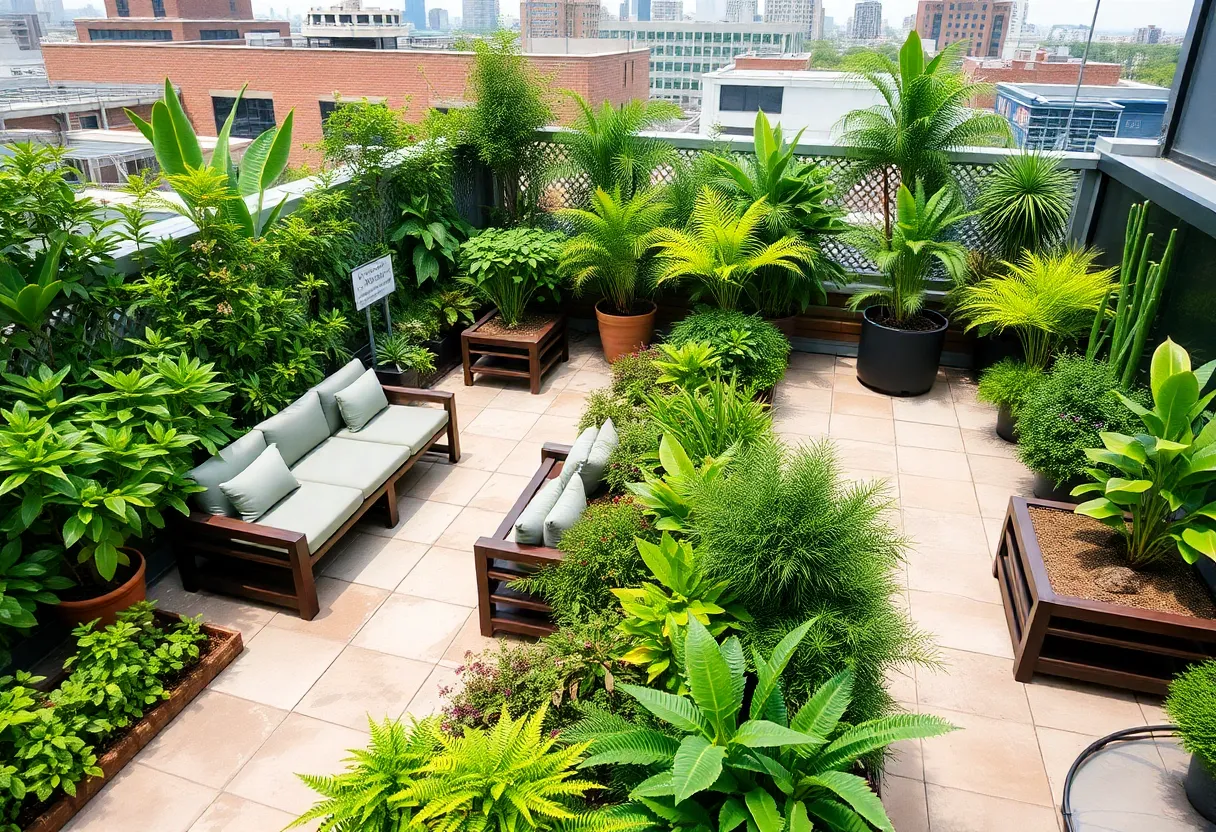How to Successfully Install a Roof Garden: Tips for Your DIY Project
Introduction
A roof garden can transform an ordinary rooftop into an extraordinary oasis. With careful planning, a roof garden not only enhances the aesthetic appeal of a building but also contributes to eco-friendliness by managing stormwater and improving air quality. This guide provides a comprehensive approach to installing a roof garden successfully.
Understanding Roof Structures
Before embarking on your roof garden project, it’s crucial to understand the structural integrity of your building. Not all roofs can support a garden due to factors like load-bearing capacity, slope, and existing materials.
Assessing Load Capacity
Consult with a structural engineer to determine the maximum load your roof can support. Generally, a **saturated soil** can weigh up to 30 pounds per cubic foot. Factoring in planters, decorative elements, and even people using the space is vital.
Types of Roofs
There are several types of roofs suitable for gardens:
- Flat roofs: Easy to access and can be fully utilized for planting.
- Sloped roofs: More challenging to landscape but can still accommodate certain designs.
Choosing the Right Garden System
When planning your roof garden, select a growing system that will best suit your environment and aesthetic preferences.
Soil-Based Gardens
A traditional soil-based garden can provide a natural growing environment but requires heavier structural support. This system is ideal for larger plants and trees.
Modular System Gardens
Modular systems consist of pre-planted trays or containers, making them lighter and easier to manage. They are perfect for those new to gardening and require minimal maintenance.
Green Roof Systems
Pre-vegetated mats or layers can be installed directly onto the substrate. These systems allow for immediate coverage and are often eco-friendly.
Designing Your Roof Garden
Once you’ve settled on a system, the next step is to design your garden. A well-thought-out design enhances both usability and aesthetics.
Planning the Layout
Consider incorporating various plant sizes and types. Use vertical gardening techniques to maximize space. Elements like pathways, seating areas, and water features can also enrich the design.
Selecting Plants
Choose plants that are suitable for your climate and the specific conditions on your rooftop. Some factors to consider include:
- Sun exposure: Full, partial, or shade.
- Wind patterns: Strong winds can damage delicate plants.
- Water requirements: Select drought-tolerant varieties for lower maintenance.
Incorporating Hardscaping
In addition to plants, include hardscaping elements like pathways, benches, and decorative features. These additions can significantly enhance the overall experience of the roof garden.
Water Management
Proper water management is essential for the health of your roof garden. Consider implementation strategies that will effectively manage both irrigation and drainage.
Irrigation Systems
Install an efficient irrigation system. Options include:
- Drip irrigation: Directs water to the roots, minimizing waste.
- Soaker hoses: Provide slow release of water.
Drainage Solutions
Ensure proper drainage to prevent water pooling on the roof. Utilize drain mats and channels to facilitate water flow. Regular maintenance of drainage systems can prevent issues like leaks and plant root rot.
Installation Process
Once planning and preparation are complete, you can begin the installation process.
Gather Materials
Collect all necessary materials before starting the installation. This includes soil, plants, containers, and hardscaping elements.
Setting Up the Base
Begin with the base layer. If using a soil-based system, ensure that the roofing membrane is protected with a root barrier. A geotextile fabric can help separate soil from the waterproof layer.
Planting
Start planting according to your design layout. Ensure each plant has adequate space for growth and root development. Always follow planting guidelines for the specific plants chosen.
Installing Hardscape Elements
After planting, add hardscaping features. Ensure they are securely anchored to withstand wind and weather.
Maintenance Considerations
Ongoing maintenance is crucial for the longevity and success of your roof garden.
Watering and Fertilizing
Regularly monitor moisture levels and adjust watering as necessary. Seasonal fertilization will also support plant health through optimal nutrient availability.
Weeding and Pest Management
Weeds can quickly overtake a garden, so routine checks are essential. Use natural methods for pest control when possible to maintain an eco-friendly approach.
Seasonal Care
Each season demands different maintenance tasks. Be vigilant about protecting plants during extreme weather and may need to adjust plant selections based on seasonal changes.
Conclusion
Installing a roof garden is an enriching DIY project that offers numerous benefits, from improving building aesthetics to providing recreational space. With thoughtful planning, the right materials, and ongoing care, you can create a thriving garden that complements your living space. Take the time to explore various elements, design ideas, and plant types to tailor your roof garden to your preferences and local climate. Remember to regularly assess and maintain your garden for continued success.





 Mays Contracting
Mays Contracting

